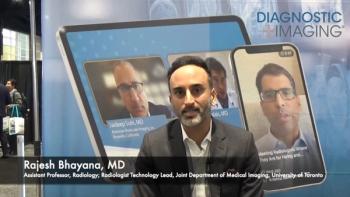
Agfa crafts universal concept for handling all kinds of medical images
Agfa repackaged its RIS and PACS into “Enterprise Visualization” at HIMSS 09, a concept designed to cover every imaging based technology from radiology to pathology, fluoroscopy to endoscopy. The concept is designed to appeal to hospital chief information officers seeking a turnkey solution to an increasingly data intensive problem. It will be especially attractive to the owners of legacy PACS who now are looking for a way to update their IT approach to meet evolving needs that stretch across the enterprise.
Agfa repackaged its RIS and PACS into “Enterprise Visualization” at HIMSS 09, a concept designed to cover every imaging based technology from radiology to pathology, fluoroscopy to endoscopy. The concept is designed to appeal to hospital chief information officers seeking a turnkey solution to an increasingly data intensive problem. It will be especially attractive to the owners of legacy PACS who now are looking for a way to update their IT approach to meet evolving needs that stretch across the enterprise.
“Enterprise visualization is built around a vendor neutral archive designed to get images to different people on the network,” said Lenny Reznik, Agfa director of enterprise image and information management.
Agfa is positioning this latest evolution of its PACS/IT as meeting three goals – lowering cost for the institution by putting all medical visualization data into “one big box,” increasing revenues by making the data easier to access remotely and, therefore, more appealing to referring docs; and boosting efficiency by creating a single global worklist with algorithms that can channel different exams to specific readers for interpretation.
“It is really a strategy for the CIO to embrace,” Reznik said.
The technology for enterprise visualization is already in hand. The means for accessing and archiving data for the various “ologies” already exist, as does the means for archiving these data in “one big box”, as Reznik says – the company’s Data Center, which provides storage for all types of medical images and diagnostic information generated by hospital groups and even regional healthcare organizations.
Data entering the data center are consolidated from multiple archives regardless of vendor into a single point of storage. A scalable and fault-tolerant architecture provides a base for large imaging sets, including multi-slice CT studies, as well as non-imaging data, such as waveforms, structured reports and PDFs.
Newsletter
Stay at the forefront of radiology with the Diagnostic Imaging newsletter, delivering the latest news, clinical insights, and imaging advancements for today’s radiologists.




























